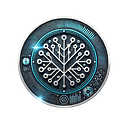Best Practices for Graph Data Modeling in Retrieval-Augmented Generation (RAG) for Generative AI
Graph data modeling is the backbone of effective Retrieval-Augmented Generation (RAG) systems in Generative AI (GenAI). It allows systems to traverse intricate relationships between entities, delivering contextually relevant and accurate responses. A robust graph structure improves the system’s ability to retrieve information and provides a foundation for coherent and insightful generation. This blog explores the best practices for graph data modeling, emphasizing technical depth and practical strategies.
1. Foundations of Graph Data Modeling in RAG
A graph is a natural way to represent knowledge. Nodes represent entities (e.g., people, places, or objects), while edges represent relationships (e.g., “works at,” “is located in”). RAG systems use graphs to navigate these relationships and retrieve contextual information.
Why use graph data models in RAG?
- Contextual Reasoning: Graphs allow linking of interconnected entities, improving the context for generated outputs.
- Scalability: Graphs can manage large datasets with complex interrelations, suitable for enterprise-scale applications.
- Flexibility: They can adapt to various types of structured and unstructured data.
2. Best Practices for Graph Data Modeling
a. Identify Key Entities and Relationships
- Nodes vs. Properties: Information frequently queried should be represented as nodes or edges rather than as properties. For instance:
- A customer’s ID can be a property, but their profile or transaction data should be nodes to allow direct traversal.
- Granularity Matters: Break down broad entities into finer-grained components. For example:
- Instead of “Project X,” represent “Project X” with subcomponents like “Milestone 1” or “Team Y.”
Example Schema:
- Nodes:
Person,Company,Product - Edges:
works_at,owns,purchased
b. Use a Well-Defined Schema
A consistent schema ensures that relationships are intuitive and queries are efficient.
- Entity Types: Define clear categories for nodes (e.g.,
Document,Event,Location). - Relationship Types: Use meaningful edge labels (e.g.,
related_to,causes,derived_from). - Attributes: Add relevant metadata to nodes and edges, such as timestamps or confidence scores.
c. Optimize for Query Patterns
Design the graph based on anticipated queries:
- Frequent Access: Move frequently accessed information closer to the topological center of the graph.
- Indexing: Use indexing mechanisms for high-degree nodes to speed up traversals.
- Edge Weighting: Assign weights to edges based on the importance or strength of relationships.
d. Ensure Data Quality
- Deduplication: Eliminate redundant nodes and edges to maintain clarity.
- Validation: Implement automated checks to ensure data integrity (e.g., valid edge types).
- Normalization: Standardize entity names, relationships, and attributes.
e. Efficient Chunking for Large Graphs
To manage large-scale graphs:
- Subgraphs: Extract smaller subgraphs (e.g., ego networks) for focused retrieval.
- Hierarchical Graphs: Use hierarchical relationships to group entities, improving scalability.
f. Incorporate Multimodal Data
- Text: Store documents or descriptions linked to entities.
- Images: Connect visual data to nodes for enriched context.
- Videos: Associate multimedia content to enhance knowledge representation.
g. Implement Soft Pruning
Filter irrelevant or outdated entities and edges without removing them completely.
- Relevance Metrics: Use algorithms to score and rank nodes/edges based on their significance.
- Soft Deletion: Archive less critical information but keep it retrievable when required.
h. Leverage Advanced Query Techniques
RAG systems often need to combine graph traversal with semantic similarity searches:
- Hybrid Search: Combine graph-based and vector-based searches (e.g., embedding similarity).
- Graph Traversal: Use k-hop queries to retrieve entities connected within
ksteps. - SPARQL Queries: For RDF-based graphs, use SPARQL for advanced filtering.
3. Real-World Applications of Graph Data in RAG
Example 1: Personalized Education Platform
- Problem: A user searches for “Quantum Physics tutorials.”
- Graph Design:
- Nodes:
Student,Course,Topic - Edges:
enrolled_in,recommends,related_to - Result: Retrieve courses related to “Quantum Physics” and suggest similar topics, personalized to the user’s interests.
Example 2: Customer Support Chatbot
- Problem: A customer asks about a refund policy.
- Graph Design:
- Nodes:
Customer,Product,Policy - Edges:
purchased,mentions,applicable_to - Result: Retrieve the refund policy specific to the customer’s product.
4. Tools and Technologies for Graph Data Modeling
a. Graph Databases
- Neo4j: A widely used graph database for storing and querying graph structures.
- Amazon Neptune: A managed graph database supporting SPARQL and Gremlin queries.
b. Embedding Tools
- Graph Neural Networks (GNNs): Learn embeddings for graph nodes to enhance similarity searches.
- Transformers for Graphs: Integrate contextual embeddings (e.g., BERT, GPT) with graph models for semantic understanding.
c. Query Frameworks
- Gremlin: A graph traversal language for querying and updating graph data.
- Cypher: Neo4j’s query language optimized for graph operations.
5. Challenges in Graph Data Modeling
- Scalability: Large graphs require efficient partitioning and distributed storage.
- Dynamic Updates: Frequent updates can lead to inconsistencies.
- Data Bias: Ensure fairness by verifying that graph relationships do not propagate biases.
6. Future Directions
The evolution of graph technology in RAG systems:
- Real-Time Graph Updates: Enable dynamic graph modifications without downtime.
- Cross-Modal Retrieval: Improve integration of graph traversal with text, image, and video embeddings.
- Explainable AI in Graphs: Use graph structures to provide interpretable insights for AI-generated responses.
To connect with me on this and other AI related topics:
kshitijkutumbe@gmail.com
Conclusion
Graph data modeling is an indispensable component of effective Retrieval-Augmented Generation in Generative AI. By implementing the outlined best practices, such as optimizing schema design, prioritizing frequently queried information, and leveraging multimodal data, organizations can create robust and efficient RAG systems. These systems not only enhance retrieval precision but also elevate the quality of generated responses, making them invaluable for applications ranging from customer service to personalized recommendations.
Start designing smarter graphs today and empower your RAG systems to deliver unparalleled performance in Generative AI tasks!
